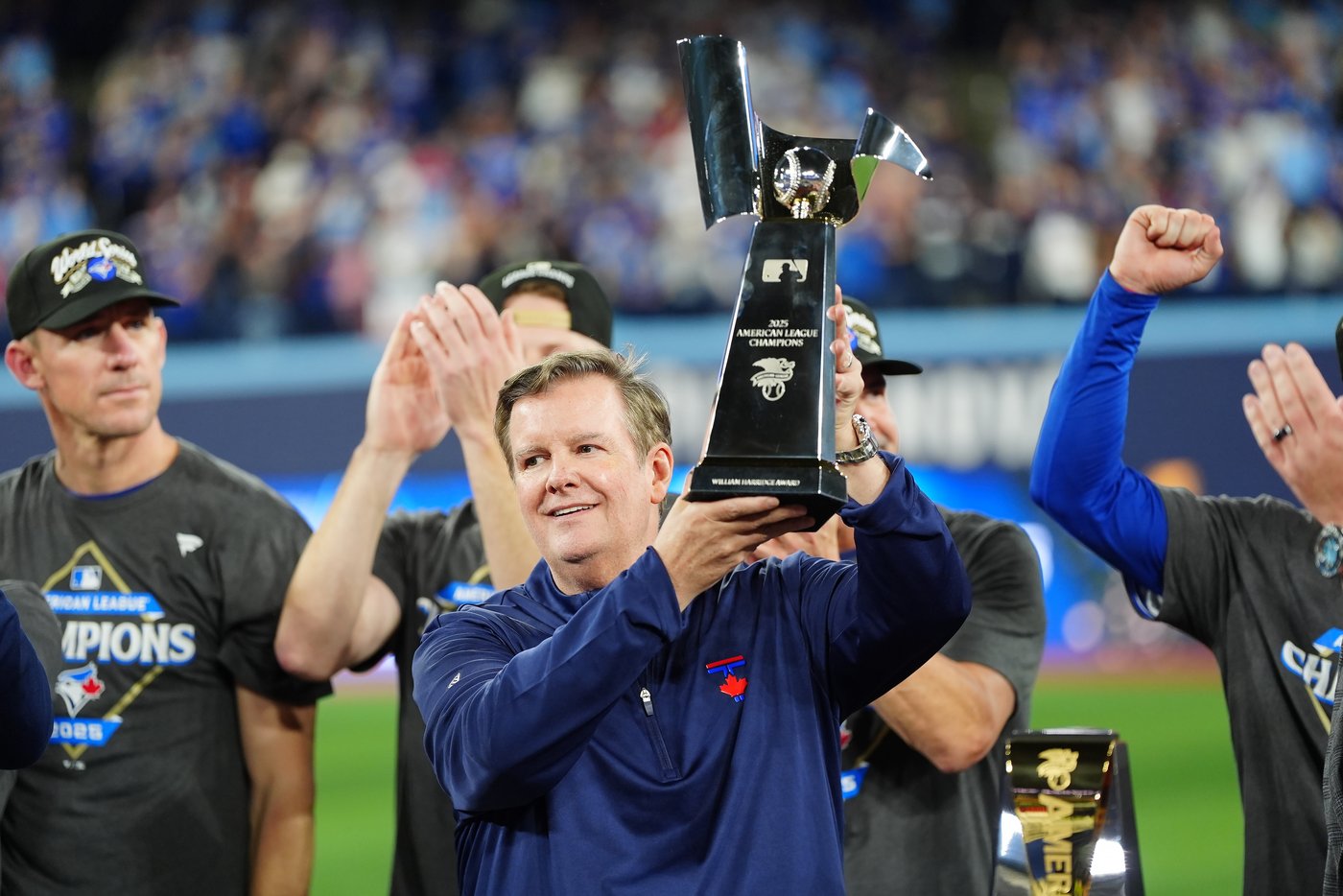Blue Jays drive home Rogers revenue growth amid World Series run

Enthusiasm for the World Series-bound Toronto Blue Jays helped boost third-quarter revenue at Rogers Communications Inc., which owns the team and broadcasts its games, nearly offsetting an overall dip in adjusted earnings and promising lucrative results in the game days ahead.
The company said revenue for its media division, which includes the baseball team, surged by more than a quarter in the three months ended Sept. 30 versus the same period a year earlier.
The leap accounted for the vast majority of growth in total revenue, which increased four per cent to $5.35 billion, despite the media segment being far smaller than the company’s wireless and cable operations.
“In media, revenue growth was up 26 per cent, driven by a strong Blue Jays regular season and the consolidation of MLSE results,” chief executive Tony Staffieri told analysts on a conference call Thursday.
Total profits in the third quarter rose by an order of magnitude to $5.75 billion, mainly due to a one-time non-cash gain linked to Rogers’ acquisition of BCE Inc.’s stake in Maple Leaf Sports & Entertainment. The $4.7-billion deal made Rogers the majority owner of the country’s largest sports company, whose assets include the Toronto Maple Leafs and Toronto Raptors.
However, adjusted earnings dropped three per cent drop, a move owed partly to that same purchase, the company said, since both the Leafs and Raptors were in their off-seasons last quarter.
Meanwhile, the “very strong regular season performance” by the Jays garnered higher game attendance and increased interest from fans countrywide, particularly in September when the team clinched a return to the post-season, chief financial officer Glenn Brandt said.
Regardless of the outcome of the championship contest that kicks off Friday, Rogers will see higher media revenue this month thanks to its baseball franchise.
“The Blue Jays’ very successful MLB playoffs and World Series run will provide further added growth in the fourth quarter,” Brandt said.
“Go Jays.”
Staffieri stressed the “cross-synergies” of owning big-league teams as well as its vast communications network.
“You can see that in spades in terms of the ability to enhance our brand, the ability to showcase our cable and wireless products and services to viewers of the game,” he said.
Not a Jays game goes by on Rogers-owned cable channel Sportsnet without frequent promotions for the telecom’s new satellite-to-mobile text messaging service for remote areas.
Rogers’ wireless service — its biggest income source — saw revenue slip to $2.06 billion in its latest quarter from $2.07 billion a year earlier.
“In the highly competitive wireless market, we saw some pressure on service revenue and ARPU (average revenue per user),” Staffieri said. Executives also pointed to lower immigration levels as a reason for the slight downturn.
The company added 111,000 net mobile phone subscribers, down 43 per cent from a year earlier. However, Rogers’ monthly churn for net postpaid mobile subscribers — a measure of those who cancelled their service — was 0.99 per cent, down from 1.12 per cent during its previous third quarter to hit the lowest level in two years.
Cable revenue climbed to $1.98 billion from $1.97 billion the year before in a “clear reversal” of downward trends from previous years, the CEO noted.
On an adjusted basis, which excluded a $5-billion gain related to the MLSE deal, Rogers said it earned $740 million attributable to shareholders or $1.37 per share in the third quarter, down from $762 million or $1.42 per share a year ago.
The company on Thursday lowered its forecast for capital expenditures in 2025 by $100 million to $3.7 billion and raised its free cash flow midpoint projection by $150 million to about 3.25 billion.
This report by The Canadian Press was first published Oct. 23, 2025.
Companies in this story: (TSX:RCI.B)
Join the Conversation!
Want to share your thoughts, add context, or connect with others in your community?
You must be logged in to post a comment.



















